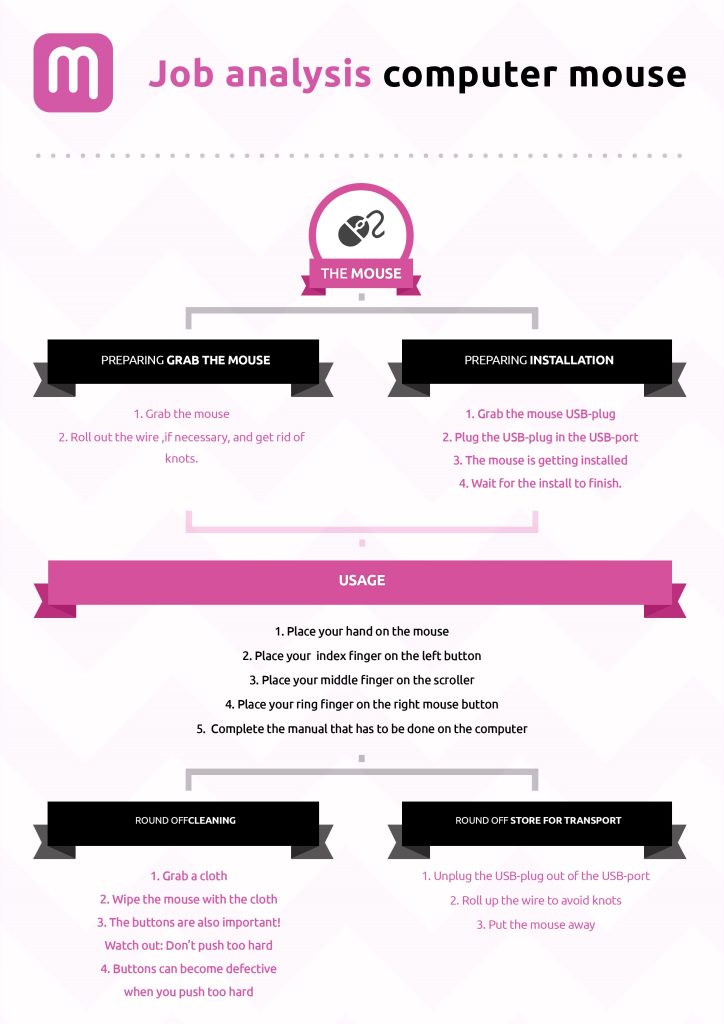It can never absolutely be predicted how users will use and interpret the user manual. Observing and analysing the interaction between users, the product and the user manual is the only way to ascertain precisely how users use the product. And this is what the user research is all about. A user research is systematic research into the practical interaction between the users and a certain product or system in expected user situations with a view to improving these interactions.
Collecting the information through a user research consists of the following three phases:
- Studying the interaction of the user with the product in his surroundings
- Observing the interaction
- Interviewing the user
In a user research, quality is more important than quantity. We want to ascertain here what types of interactions there are; how often a certain interaction occurs is therefore less important. Nearly every user study brings to light interactions that neither the designers nor the researchers had anticipated. User researches are labour-intensive and therefore are usually conducted with five to fifteen participants (Daams, 2011).
How to assess the interactions?
There are different methods and techniques used to gain insight into the interactions. There are two ways to assess an interaction: assess it with users and without users.
Assessment without users
For an assessment without users, an expert assesses the interactive aspects of a product. Owing to the involvement of the user and the observation of the interaction, this cannot be a comprehensive user research. Nonetheless, this type of assessment is made during the development of every user manual. To record the interactive aspects of a product, a task analysis is used. In a task analysis, the question asked is ‘what tasks must be performed in order to realise the intended result?’. As a part of this, the use of the product is divided into a number of steps or tasks. The connection between the various tasks is shown by means of a hierarchical analysis. The outcome of a task analysis produces a list of tasks that a user must perform in order to achieve a certain goal.
The task analysis provides insight into how complex a certain matter is. From this analysis, it can be determined which steps need an illustration in addition to text or which steps can be combined in a single illustration.
To analyse the many phases in the process of using a product (a good user manual should deal with all phases of using a product!), the list below can be used. In this overview, the phases of using a product are listed. This arrangement is also used in the IEC 82079-1 Instructions for Use. For each phase of use, the tasks within that phase can be identified.
Phase of Use
- Purchasing
- Warning
- Transporting
- Installing
- Commissioning
- Using
- Maintaining
- Repairing
- Disposing
Assessment with users
In an assessment with users, a researcher observes the interaction of the users with the product. The study is immediately followed by an interview. The results provide insight into the user-friendliness of the instructions. The observation is made inconspicuously without the researcher becoming a part of the situation. No instructions are given and the researcher also asks no questions. Ideally, the behaviour of the user is recorded on video so that it can be evaluated later. Following the observation, the user is interviewed. During the interview, the user is asked about his own actions in order to come up with possible ways to improve the interaction. This interview can be given either individually or in a group. The great advantage of a group interview is that participants are able to add to one another’s comments, which in turn elicits further comments from others. A disadvantage could be that the users influence one another too much and that those users who talk the loudest and the most are heard the best.







